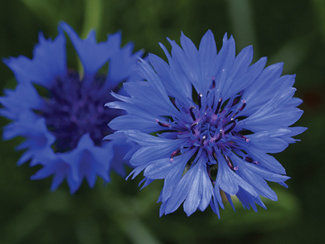It’s rewarding to grow your own fruit and vegetables, but more and more of us also want to grow flowers that can be cut and enjoyed inside, too. Growers are taking notice of this trend, and there are more cut-flower varieties available today than ever before.
Now you can create your own landscaping masterpiece, a Monet’s garden, with a little planning and some jumbo packs. Here are some new and old favorites to try this year.
– Red Sea ageratum: Showy, burgundy-red flower clusters bloom summer through fall on long stems. Grown in full sun to part shade, this beautiful cutting flower reaches 30 inches tall by 15 to 18 inches wide. Blue Horizon is another great variety.
– Spiky Purple celosia: Deep purple flowers are crowded onto terminal spikes, opening slowly from the base. It blooms all summer long in full sun and grows 12 to 16 inches tall. Spiky Pink is a beauty, too.
– Pink Surprise calendula: Ruffled 1-inch flowers are orange at first and then take on a tinge of pink as they age. This plant grows to 18 inches tall in full or part sun. Great in containers or flower beds, as well as in cut-flower arrangements, it often reseeds itself.
– Giant Imperial mix larkspur: If you want long spikes of soft lavender, blue and pink in your flower arrangements, grow larkspur. Flower stems are long and dense on 36- to 48-inch-tall plants. These thrive in full sun. They are also good for drying.
– Billy Buttons or Drumstick Plant craspedia: This offbeat Australian daisy sends up 2-foot-tall stalks topped by globes of bright yellow flowers. Bloom may occur at any time of the year. Flowers are good fresh or dried in arrangements. It self-sows freely.
– Bachelor buttons, aka cornflower: The Centaurea family of plants also includes Dusty Miller, among other common plants. Blue Boy has double blooms in a stunning shade of deep blue. These are great plants for the cutting garden or flower border, and this self-sowing wildflower is well suited for cutting, drying and pressing. Did you know the plant’s common name, cornflower, refers to the fact that it was once typically found growing amid grain crops in Europe? Other plants that historically grew in farmers’ fields are corn cockle (agrostemma), corn poppy and corn marigold.
– Matsumoto aster: The Matsumoto series is known for disease resistance and superior cut-flower quality. Semi-double blooms are borne on long, strong stems that are very long lasting in the vase. Blooming begins in midsummer and doesn’t quit until late fall. And the best part is, the more flowers you cut, the quicker new buds arise. The large, yellow center is surrounded by layers of bright purple, pink or white petals and is eye-catching even from across the garden. They thrive in any sunny garden spot or container and grow to 24 inches tall.
– Las Vegas mix gomphrena: Draw hummingbirds and butterflies to your garden with this heat-tolerant cutting flower. The pink, purple and white clover-like flowers may also be dried quickly and easily, retaining their color and shape for winter arrangements. Grow this 16- to 20-inch-tall plant in a container for a long-lasting living bouquet.
– Supreme Blue statice. A hardy, low-maintenance annual, this deep-blue flower is resistant to drought, heat and pests. It even thrives in poor soil conditions and blooms continuously from late spring until first frost. Cut statice just after they have begun to open for the most vibrant, lasting color. They are ideal for dried arrangements, like celosia and gomphrena.
These are just some of the affordable and easy-to-grow cut flowers available. Think of all the bouquets you’d be able to make this year from your own garden-grown flowers.
Jan Nelson, a landscape designer and California certified nursery professional at Plant Works in Ben Lomond, will answer questions about gardening in the Santa Cruz Mountains. E-mail her at ja******@*ol.com, or visit her Web site, www.jannelsonlandscapedesign.com, to view previous columns and pictures.











